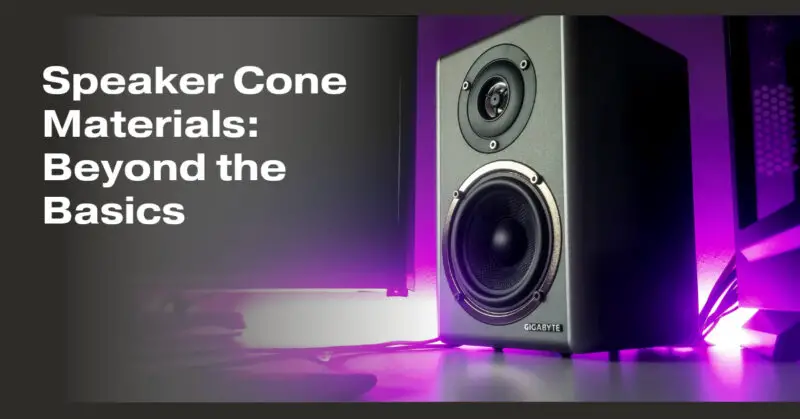The material used in the construction of a speaker’s cone plays a pivotal role in determining the speaker’s sound quality and characteristics. While the basic materials like paper, plastic, and metal are common, advancements in technology have introduced a wider range of options. In this article, we’ll explore some of the more advanced and specialized cone materials used in modern speaker design.
1. Traditional Cone Materials:
Before delving into advanced materials, let’s briefly review some traditional cone materials:
- Paper Cones: Paper has been a go-to material for speaker cones due to its lightweight and rigid nature. It provides a warm and natural sound but may lack the rigidity for high-output applications.
- Polypropylene Cones: Polypropylene is a common plastic material used in speaker cones. It offers good durability, moisture resistance, and affordability, making it suitable for a wide range of applications.
- Aluminum Cones: Aluminum cones are lightweight and rigid, allowing for accurate sound reproduction, especially in midrange and tweeter drivers. They are often used in high-end speakers.
- Kevlar Cones: Kevlar, known for its strength and lightweight properties, is sometimes used in midrange and woofer cones. It provides excellent rigidity and durability.
2. Advanced Cone Materials:
Now, let’s explore some advanced speaker cone materials that have gained popularity in recent years:
- Carbon Fiber: Carbon fiber cones offer exceptional rigidity and low mass, resulting in precise and detailed sound reproduction. They are commonly found in high-end speakers and are often used in midrange and woofer drivers.
- Glass Fiber: Glass fiber cones strike a balance between stiffness and weight. They are known for their smooth and neutral sound, making them suitable for a variety of speaker applications.
- Beryllium: Beryllium is an extremely lightweight and rigid material used in some high-end tweeter diaphragms. It can produce highly detailed and extended high-frequency response.
- Magnesium: Magnesium cones are lightweight and offer excellent stiffness. They are used in midrange and woofer drivers and can deliver detailed and dynamic sound.
- Graphene: Graphene is a super-thin, lightweight, and incredibly strong material. Some manufacturers use graphene diaphragms to achieve exceptional stiffness and reduce distortion in speakers.
3. Hybrid Cones:
Manufacturers sometimes combine multiple materials to create hybrid cone designs. For example:
- Aluminum-Magnesium Alloy: This combination offers the benefits of both aluminum and magnesium, including stiffness, lightweight, and excellent sound characteristics.
- Paper with Advanced Coatings: Traditional paper cones can be enhanced with specialized coatings to improve rigidity and dampening properties while retaining the natural sound qualities of paper.
4. Shape and Design:
In addition to material choices, cone shape and design can also impact sound quality. Some speakers use non-conventional cone shapes, such as concave or horn-loaded designs, to achieve specific sound dispersion patterns or reduce resonance.
5. Application-Specific Cones:
Certain specialized applications, such as studio monitor speakers, may utilize unique cone materials and designs tailored to specific audio requirements, such as ultra-flat frequency response and minimal distortion.
When selecting speakers, it’s essential to consider the cone material and design in conjunction with other factors like driver size, enclosure type, and amplifier compatibility. Ultimately, the right cone material depends on your specific audio preferences, budget, and the intended use of the speakers. Advanced cone materials open up exciting possibilities for achieving precise and high-fidelity sound reproduction in a variety of speaker designs.

